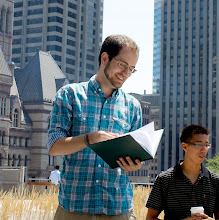Green The Valley and fix the climate
Green The Valley and fix the climate
It seems somewhat strange to me at first thought, that I have not yet devoted a column to the climate crisis. Odd, because it is perhaps the greatest present threat to civilization as a whole. The federal government seems to think that a slight tax cut is more important than this – so fulfilled is their election commitment to take a penny off your morning coffee, before we see their plan to take preventative action on drought, stronger hurricanes and rising sea levels.
Such a global challenge must be solved at the international level; and so there is perhaps a tendency to avoid such topics when trying to convey solutions amongst local issues. Yet on that ever-powerful second glance, I realize that strategies for fighting climate change have been discussed in this column, and quite often.
I’ve written about sustainable agriculture: local and organic food. While reducing our dependency on fertilizers and pesticides helps ecosystems function as they were meant to, it also helps the climate. All of the chemicals we spray on fields and lawns are fossil fuel based, and so their production causes the release of carbon dioxide. Purchasing food from the grocery store that has traveled 4,000 kilometres contributes significantly to these problems. Support the local farmers at your farmer’s market, and ask about their production practices when you go.
Local industry and power plants have been a topic of discussion in Greening The Valley. The plants release toxic chemicals to the air, amounts of which are often on the decline and must keep going in that direction. But they also play a great part in the release of greenhouse gases that cause global warming. It is unfortunate that tar sand production in Alberta is causing Canada’s emissions to skyrocket over those of the United States. Local petrochemical companies must do all they can to get those carbon dioxide levels down at their own facilities, which can logically be done alongside reductions in mercury, carbon monoxide and smog-causing chemicals.
I have also discussed naturalization and its importance to this city. As trees and plants absorb carbon dioxide, many scientists agree that this will help to reduce the greenhouse effect which causes the changes in weather we’re starting to see. People in communities throughout the world planting trees, supports the ability of atmospheric systems to go into self-repair. Preservation and restoration of parks is vital to this process. The release of data from the Neighbourwoods tree study in Sarnia will be available soon to provide you with information on which native trees to plant in your backyard.
More recently, I have written on issues of waste and energy. Whether we’re using alternative energy by supporting a company like Bullfrog Power or capturing methane emissions and creating clean electricity from landfills. Whether purchasing items with less packaging or advocating for a transition away from coal power, you are doing your part to reduce climate change. The results that come out of doing good for the environment often have multiple benefits for society. Climate repair can be one of those perks we get from doing good things in our community.
Darcy Higgins is a native of Sarnia who is currently completing a degree in Environmental Studies. He can be reached by e-mail at darcyhiggins@gmail.com


0 Comments:
Post a Comment
<< Home